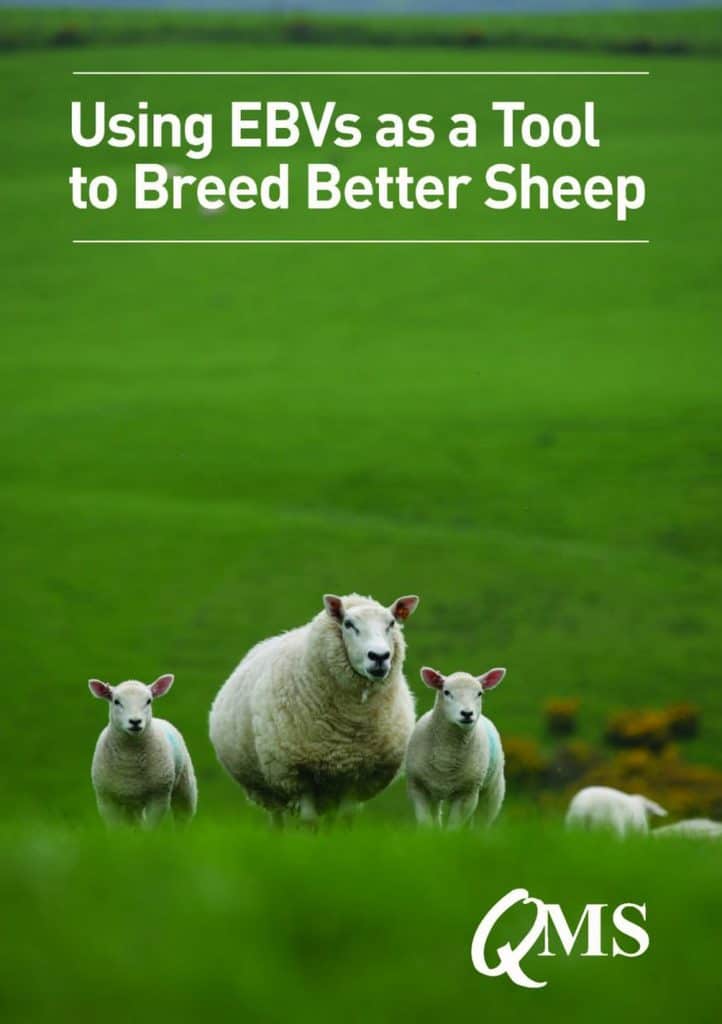Quality Meat Scotland (QMS) has updated its free guide explaining the use of Estimated Breeding Values (EBVs) to help sheep breeders in Scotland select the right breeding stock for their business.
“Using EBVs as a Tool to Breed Better Sheep” is an easy-to-read publication which has been extensively updated to include the improvements to the performance recording system that were introduced by Signet Breeding Services earlier this year.
One of the main changes for commercial buyers is that for terminal sire breeds, the existing carcase trait EBVs are now weight-adjusted, rather than being age-adjusted. This means that EBVs will give a better prediction of muscle and fat at slaughter weights. This reflects that on farm, lambs are selected on weight, not age.
Another key change is that EBVs and indexes have been rebased. The breed average figures are now based on 2010 data, rather than 1990’s data and better reflects the genetic progress that has been made by many breeds over the past 25 years. The EBV numbers that buyers see will be smaller than previously, but a top 10% ram will still be in the top 10%.
The QMS guide also includes information about the introduction of some new EBV’s which build on research undertaken at SRUC using CT scanning images. Again, relating to carcase traits, these include an Intramuscular Fat EBV, with intramuscular fat having being identified as a contributor to meat eating quality. The other new EBVs that breeders can now consider when investing in a tup are; Vertebrae number (thoracic, lumbar and total); spine length (thoracic, lumbar and total) and Eye muscle area (from CT scanning). Commercial buyers will be able to use these new EBVs to maximise carcase value in their lambs.
Another important change which has been established in response to the findings from the RamCompare project which QMS supports, is the new National Terminal Sire Evaluation. This sees the main terminal sire breeds now evaluated together, rather than individually. Although EBVs will be reported by breed, if there are good genetic links it will be possible to apply a conversion factor from Signet to allow EBVs to be directly compared between breeds. The results from the third year of the RamCompare project have just been published and highlight the value of investing in a ram with the right genetic merit for your system.
As well as containing information on the new EBVs and indexes, the updated guide from QMS offers advice on how to interpret the EBV data presented at sales and offer producers practical information on tup selection.
Sarah Millar, Head of Industry Development at QMS is confident that using EBVs can help the productivity and profitability of sheep businesses. She said:
“The changes that have been introduced recently will undoubtedly improve the accuracy and relevance of the UK’s sheep terminal sire genetic evaluations. We hope that this free publication will provide a step-by-step guide for those interested in learning more about how EBVs can help them improve the performance of their flocks.”
If you would like to obtain a free copy of the updated guide ‘‘Using EBVs as a Tool to Breed Better Sheep’’ contact QMS on 0131 510 7920. It is also available to download from the QMS website www.qmscotland.co.uk/publications





